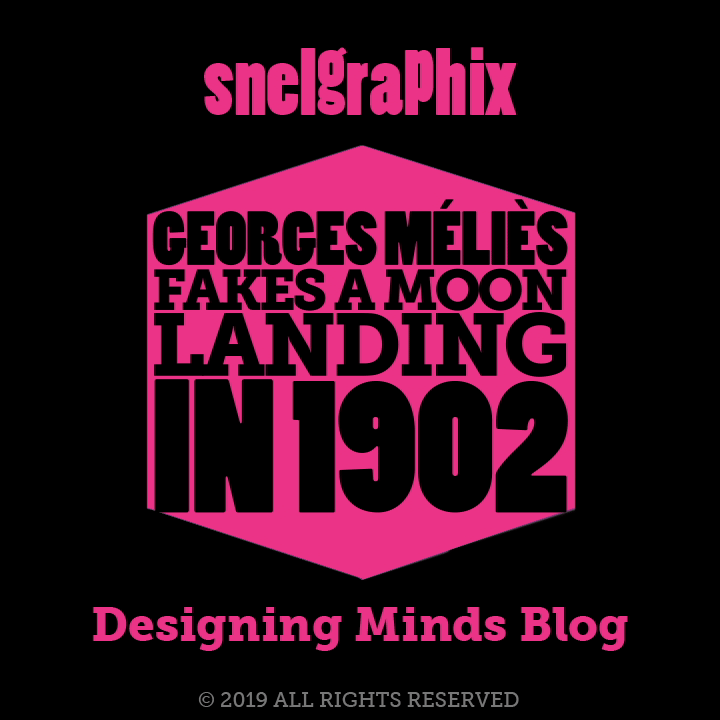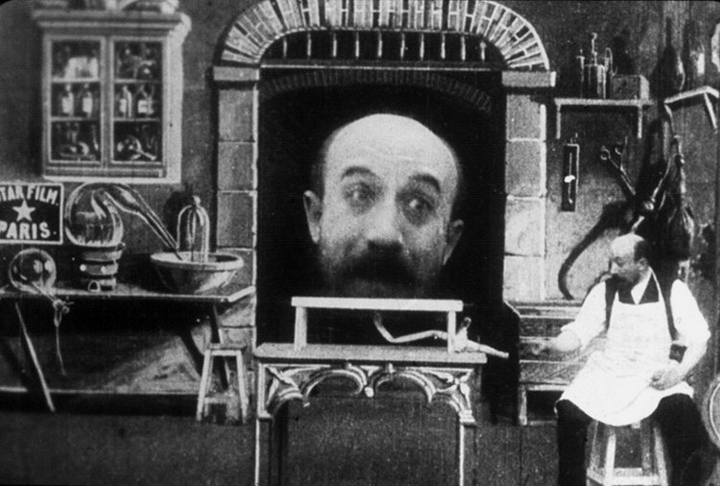Abracadabra.
The late 19th century was an era of great transition. Technological wizardry was rapidly changing human civilization. Before the days of quantum mechanics, when the Aether was still a medium worth considering, the power of lightning was being captured and harnessed. The marriage of darkroom chemistry and electrical engineering acted like the legendary philosopher’s stone, forever transforming how humanity communicates. Newly created inventions were rapidly spreading across the planet, beguiling human minds.
The famous inventor Thomas Edison gets credit for the spread of this sorcery, for inspiring other gifted people who would go on to become pioneers in the early days of an eon that would turn into the Information Age. The adoption of the scientific method led to the manufacturing of mass-produced artifacts. Edison’s laboratory in New Jersey was like a wizard’s tower generating marvels that would enchant minds across the nearby Atlantic Ocean and around the world. Humanity started to master the elements. Gaslight no longer illuminated the night. DC power had taken over, and the alternating current revolution was about to transform things again. When we think of this early history of electrical-mass media communication, we summon the specters of multimedia entrepreneur Charles Pathé, the Lumière brothers, and of course, Georges Méliès from the mists of time.
French illustrator, puppeteer, stage magician theater owner, and filmmaker, George Méliès pioneered visual effects. As a child, he exhibited a passion for drawing, enjoyed making marionettes and was obsessed with stage magic, having been influenced by illusionists John Nevil Maskelyne, and Jean Eugène Robert-Houdin. Although Méliès sought a more creative lifestyle, family obligations meant he had to learn to sew leather as his future was predicted to be one of shoe-factory management. After his father retired in 1888 and after selling his shares of the family shoe company to his brothers, Georges Méliès bought the famed magic theater, the Théâtre Robert-Houdin. Having to take on many roles to keep this theater going, tested Méliès‘ artistic talents. Not only was he responsible for managing the effort, but he also created some thirty new stage illusions, hired the magic acts, designed the costumes and sets. He was an actor, director, producer, and writer. Georges Méliès was even once employed as a political cartoonist by a liberal French newspaper.
Multiple copies of Georges Méliès in the 1900 film, The One-Man Band • Wikimedia Commons
Science realized seems like sorcery and in fact, acts as a mass charm spell. In France, Thomas Edison’s great work inspired August and Louis Lumière. The brothers did not merely seek to replicate Edison’s peep-hole dependent kinetoscope. The Lumière brothers wanted to make something even better. This improved technology was the cinematograph, the first working film projector, allowing movies to be viewed by more than one eye at a time. Rooms full of people replaced the single spectator. On December 28, 1895, the Lumière brothers showed this magical item off at the Salon Indien du Grand Café to a small audience that included Georges Méliès, who was inspired to buy one of these devices from the brothers. The Lumière brothers rejected his offer, causing Méliès to find another means by which he would actualize his vision, changing the direction of not only Georges Méliès’ life but history as well.
George Méliès undertook a quest to find a moving image projector for his magic theater, bringing the multi-talented artist to London. Here he encountered British film pioneer Robert W. Paul who created the Animatograph film projector. He purchased one of Paul’s projectors and several short Edison Manufacturing Company films. The Théâtre Robert-Houdin began to screen movies to supplement the stage magician’s live performances. These movies proved successful.
Méliès learned everything he could about the filmmaking process. He even made the equipment he needed. He taught himself how to do things like work in the darkroom and print films. Georges Méliès modified Robert W. Paul’s invention, making the projector also work as the camera. He would soon patent the Kinètographe Robert-Houdin camera-projector, with his associates, Lucien Korsten, and Lucien Reuloss. Within a year the superior equipment manufactured by the likes of the Lumières, and Pathé made Méliès’ engineering efforts moot, so the auteur began using the machines made by others once again. These efforts learning the mechanical details of this early art form, and a little luck, were the components Méliès needed to cast numerous truly spellbinding cinema illusions.
Twin versions of Georges Méliès in L'homme à la tête de caoutchouc (The Man with the Rubber Head) screenshot. 1901 • Wikimedia Commons
By early 1910s the prolific Georges Méliès had created over five hundred films. These were movies that brought the magic audiences witnessed on stage to screen, but with additional darkroom-derived impact. Méliès directed and produced films containing trickery that caused women to change into men, only onscreen of course, a result of Lady Fortune’s grace. A jammed camera had been the cause of this seemingly magical transformation. Stopping the film and changing the scene would become one of the easiest ways to create a visual effects transition. This technique is known as multiple exposure. Méliès would continue to embellish stage magic routines with in-camera effects for ever-growing audiences. George Méliès’ many other contributions to cinema include dissolves, hand-painted color, multiple exposures, substitution splices, and time-lapse photography. Countless filmmakers would adopt his procedures. He became famous for creating in-camera visual effects wizardry that charmed audiences globally. Georges Méliès made films in every genre imaginable, and even advertisements. But Méliès is best known for his fantasy-themed films, then called féeries in French or fairy plays in English.
Georges Méliès’ work demonstrates that there is some truth to the cliché regarding believing half of what you see. According to Smithsonian Magazine,* Méliès’ filmed illusions included faked images of naval combat purported to be actual footage from the Greco-Turkish War of 1897. The director shot his supposed documentary from the safety of his Parisian film studio, never getting near the front line. Méliès was one of the first filmmakers to use a movable set, having made use of this method when conjuring his war-phantasm. Most people probably don’t know much about Georges Méliès’ career as a war artist. Most people know his name thanks to the famous science fantasy film Le Voyage dans la Lune, a movie titled A Trip To The Moon for English speaking audiences. The legendary science fiction works of writers Jules Verne and H.G. Wells were the source material that inspired this foundational 1902 visual effects-driven movie.
The cusp between the 19th and 20th centuries was a miraculous time of many advances that would continue to develop into the world of mass communication many of us inhabit today. Visual effects have had a profound impact on our global civilization. Television shows, commercials, music videos, weather, and sports broadcasts use the same visual trickery that profitable big budget movies do. The green screen and the virtual set owe their existences to the work of this early cinema magician. Even broadcast journalism frequently makes use of the same technology and methods. Many of us are so used to seeing believable composited imagery we fail to notice it. The proliferation of 21st-century computer software like Adobe Photoshop and After Effects makes visual effects wizardry a craft anyone can learn. We don’t need a crystal ball or a horoscope chart to predict that scientific achievements will continue to emulate the feats of fabled sorcerers. We appear to be looking towards a future world of even more incredibly realistic and immersive, virtual realities, summoned from the fantasy-generating realms of the imagination.
Le Voyage dans la Lune illustration by Georges Méliès


































